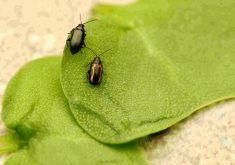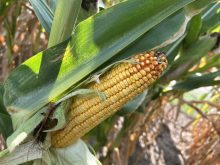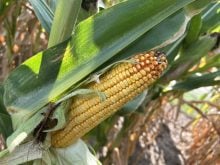Summary
Insects: Levels of alfalfa weevil larvae are rapidly declining in some alfalfa fields as the larvae mature to pupae. Pea aphid levels are still a concern in some pea fields. Aphid levels are being monitored carefully in some cereal fields; high levels of natural enemies have also been noted in some of these fields and may be helping to regulate levels below economic thresholds.
Plant Pathogens: The current weather conditions are favorable to disease development. If fungicides are being considered for management of diseases in various field crops, a recommended rate of fungicides should be used.
Read Also

Still hard to predict precise fertilizer payback
Despite decades of advances, international research finds no clear answer for where and when adding nutrient will fail to boost growth.
Blackleg was reported in canola. Root and crown rot in wheat was detected in a sample submitted to Manitoba Agriculture’s Crop Diagnostic Lab.
Root rot, bacterial blight and brown spot in soybeans continue to be reported in soybeans.
Aphids in Cereals
You will often find aphids clustered on some plants; adults with the young nymphs nearby. Aphids develop through their stages very rapidly, so when monitoring all aphids are counted, not just larger ones. Parasitized aphids, known as aphid mummies (shown at top of page) will look swollen and discoloured and are not counted.
The economic threshold on cereals is 10-15 aphids /stem prior to the soft dough stage. Research has found that after the early-dough stage insecticide treatments were not cost-effective.
Scouting tips: It is quite normal to find some plants with 10-15 or more per stem, but if there are a lot of plants around these with none or very few per stem, than the field would be below the economic threshold. If you can randomly pick plants (not looking specifically for plant with aphids to do counts on), and on average be above 10-15 per stem, and not yet at the soft dough stage, that is the point when insecticides become economical. Aim to sample at least 20 stems for aphids; selecting 5 stems from each of at least 4 areas of the field is a good sampling plan.
Factors regulating aphid populations: Sometimes aphid populations will increase, but other times populations will stabilize or decrease due to predators and parasites, diseases, or heavy rains which can reduce a population. So if a heavy rain goes through, sometimes it is good to reassess a population. And if natural enemy levels are high, it is good to assess whether levels of aphids are possibly declining.
Soil moisture levels and aphids in cereals: As another consideration, research on English grain aphid in winter wheat found that there was a greater yield reduction for a given aphid density when plants were grown under water stress versus nonstress conditions. They concluded that “therefore, the water status of the plant should be considered to determine an economic injury level for S. avenae infesting winter wheat” (Environmental Entomology. 1988. Pp. 596-602). This may be difficult to do, but does show that a given level of aphid feeding on cereals is likely to reduce yields more when plants are growing under water deficits, which is generally not the case this year.















